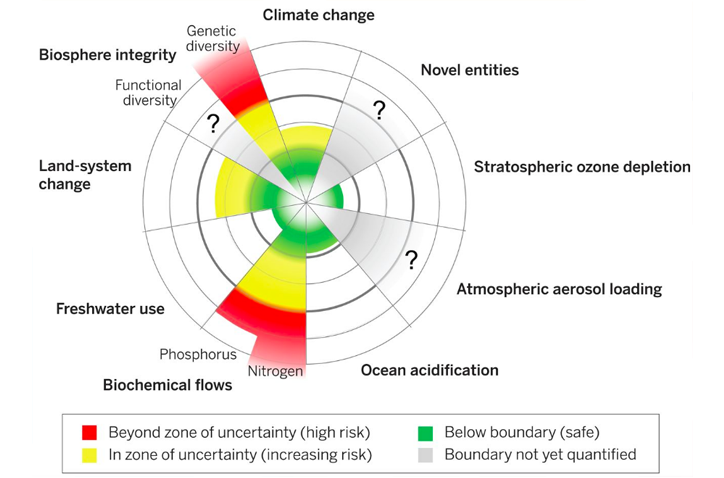
Everyone agrees – in theory at least – that the priority for farming should be ‘sustainable intensification’, producing much more food primarily through achieving increased yields rather than ploughing up more land or using increased amounts of other inputs such as fertiliser and water.
This is supposed to replace the Green Revolution that began in the 1960s, which succeeded in staving off the threat of global famine by dramatically increasing production of staple crops, but at the cost of accelerating environmental impact.
But what if the current definition of sustainable intensification is also too narrow? In a new open-access paper published in the journal Ambio, the Swedish environmental scientist Johan Rockstrom and colleagues argue for a radically expanded concept of sustainable intensification. This is one that would put agriculture at the centre of a positive transformation rather than simply trying to limit its negative impact while still producing sufficient crops to feed humanity.
Conventional thinking tends to see balancing food production with the conservation of ecosystems as competing imperatives: more food equals less natural land and therefore reduced biodiversity. Hence the need to increase yields, producing more food per unit of land area so more of the Earth’s surface can be spared for valuable ecosystems like rainforests and wetlands.
But Rockstrom and colleagues argue for something much more profound, which they term a “paradigm shift” aimed at “repositioning world agriculture from its current role as the world s single largest driver of global environmental change, to becoming a key contributor of a global transition to a sustainable world within a safe operating space on Earth”.
This “safe operating space” is based on the idea of ‘planetary boundaries’, a concept first proposed by Rockstrom and co-authors back in 2009 with a landmark paper published in the journal Nature. (I have long been a fan of the planetary boundaries concept, and used it as a central theme in my 2011 book The God Species.) The framework was revised and updated in 2015 with a paper published in Science.
The novel and most useful aspect of planetary boundaries is that the framework uses real numbers, proposing quantified limits to human interference in key Earth system processes in order to protect the stability of the planet. For example, it was suggested that CO2 concentrations in the atmosphere should be limited to 350 parts per million in order to stave off global warming of more than 1.5C above pre-industrial temperatures (we’re currently at 400ppm and rising). Other quantified boundaries were proposed in other areas from biodiversity loss to ozone depletion to global freshwater use.
As Rockstrom and colleagues recognise, agriculture is a key factor in whether we stay within or breach most of the planetary boundaries. This in turn means that the role of agriculture needs to be thought of differently. Instead of its singular aim being to deliver only human nutrition, agriculture must now also deliver climate stabilization, flood control, biodiversity enhancement and so on.
This initiative is given added urgency by the agreement announced last week by a international expert group that the planet has officially now entered a new geological epoch defined by human activity, the Anthropocene. The post-ice age Holocene, within which human civilisation first emerged, is now over, according to the Anthropocene Working Group of the International Commission on Stratigraphy – and agriculture is probably the single greatest agent of rapid planetary change.
Let’s drill down to some of the specifics, summarised in the table below, adapted and simplified from Table 1 in the Rockstrom et al paper.

This paper – with its useful metrics and holistic approach – could provide much-needed new focus in the debate about food and farming. It could also bridge some of the divides between different camps – for example those who prefer land-sparing to land-sharing (and vice-versa) or the perennial organic vs. conventional farming debate.
It could also help inform our work at the Cornell Alliance for Science. While we have mostly focused on trying the depolarise and inform the debate on crop biotechnology with sound science, we are clear that ‘GMOs’ are only a part of a much bigger challenge of how to achieve true environmental sustainability while eliminating poverty and hunger. Johan Rockstrom and colleagues have made an important and lasting contribution in moving this larger debate forwards – their new paper should be widely read and influential.
